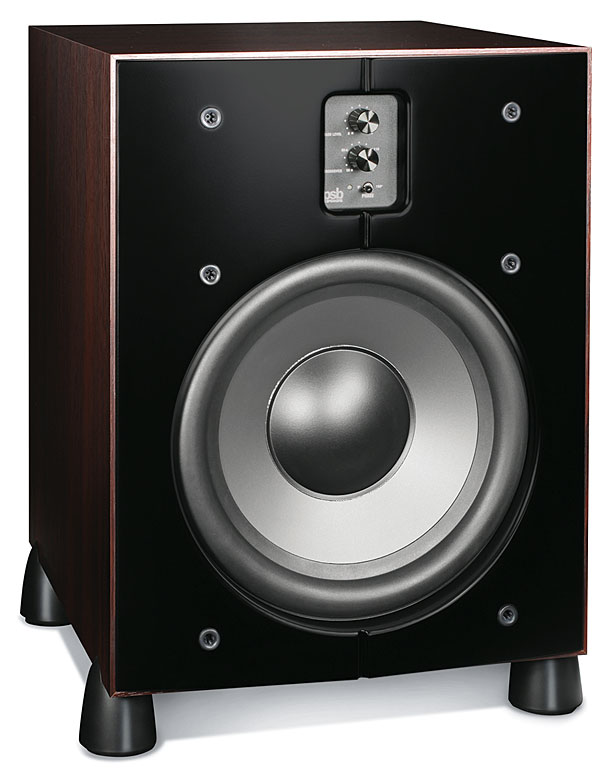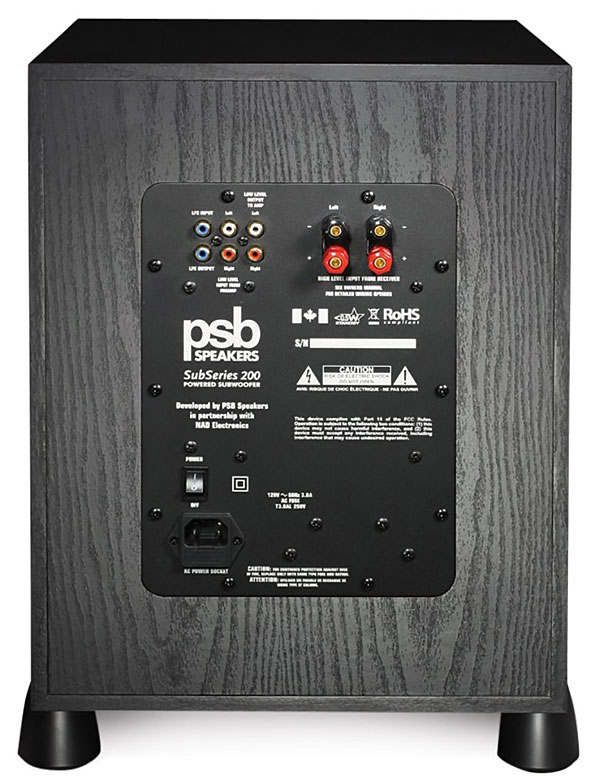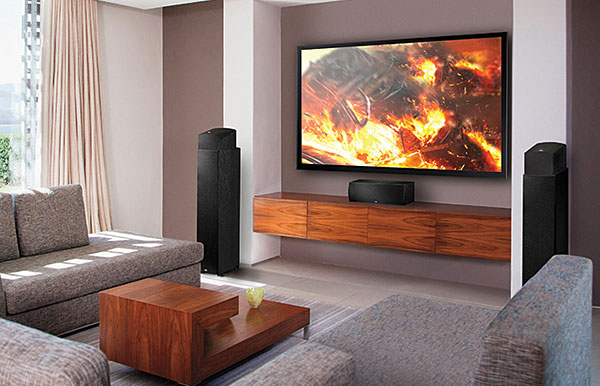PSB Imagine X Speaker System Review Page 2
Despite their vertically challenged shape, the X1Ts proved plenty extended for all but the most demanding music. Familiar bass testers such as James Taylor’s “Line ’Em Up,” which plumbs well into the sub-35-Hz region, and a couple of nameless dubstep tracks I keep around for even deeper dives produced solid results, albeit somewhat attenuated below about 30 Hz in the latter cases. There was a subliminal hint of warmth in the 60-to-80-Hz region, but the X1Ts displayed nothing like the shameless romancing of the 50-to-100-Hz octave that some smaller speakers exploit to camouflage their limitations lower down. Nor need they: PSB specs the mini-towers’ –3-dB point at 35 Hz, and everything I heard tended to confirm it. See the Test Bench box for results from our measurements.

On close inspection, over a range of male and female voices both spoken and sung, the XC center speaker made a remarkable match to the X1T pair. Other than the more tightly focused image and the slight loss in airspace of a single speaker versus the phantom image of a separated pair in mono, there was almost nothing to distinguish it. Equally unexpected, there was far less off-axis lobing—the tonal shifts heard as the listener moves to one side or the other—than I hear from the great majority of horizontal-pair two-way centers. I’m not sure why this was the case, but I suspect that again, design manipulations of crossover-driver interaction worked the magic.
The main course here is the PSB suite’s reproduction of Dolby Atmos. I’m a fan of the format, and I continue to use Dolby’s own Atmos Demonstration Disc on Blu-ray as a reference and setup tool; I found it as instructive as ever with the PSBs. The hemisphere of ambience enveloping the listening position on the “Leaf” trailer was as eerily convincing as I’ve ever heard, while the myriad flutterings and twitterings flew seamlessly up, around, and behind. The XAs produced the same modestly flattened half-orb of ambience I’ve heard from other “bounce” Atmos solutions. I can’t say that the PSBs’ superior tonal match made them particularly more effective, but it was certainly no bad thing.

I believe that the job of multichannel movie sound is to create convincing ambience: to draw the viewer subtly deeper into the story, not jolt him out of it with too many zooming surround-effect parlor tricks. Consequently, I’ve had a long-held preference for dipole surrounds, which enhance ambience creation at some expense of hard-effect precision and timbral consistency. But now in the Atmos era, I’m not so sure: Together, the PSB system’s directradiating XB two-ways and ceilingbouncing XAs yielded an ambient field that combined the best of both worlds, at least on the best-conceived program. Even on non-Atmos content, with “regular” surround material, the XAs’ derived height content served usefully to delocalize the surrounds to a surprising degree, the result being very smooth all-around ambience, without the slight hollowness that dipoles usually suffer on occasional hard-effects elements. Of course, this has little to do with PSB’s XB surround speakers per se, but these proved to be excellent reproducers in their own right. (I compared them against the X1Ts, with very favorable results.) In short, the XB/XA combination worked exceptionally. Relative to a pair of wall-mounted dipoles, however, the livability of a surround/elevation combo on stands, impinging unavoidably on the floor plan, remains a question.
So far, my shelf of Atmos-encoded Blu-rays is woefully short of movies I’d care to watch more than once (if that). So I cued up San Andreas again, which is hard to fault on production quality and is at least funny, if unintentionally, and it does feature Alexandra Daddario in a halter top (spoiler alert: It gets wet). The tsunami scenes in chapter 9 subsequently flaunt plenty of (literally) over-the-top height cues, which the PSB system delivered whole, with not a single splash or crash out of place or excessively highlighted. Atmos (and eventually DTS:X) may or may not conquer the market, but on demo material such as this, it’s hard to fault. And on everything I tried, the PSBs’ dialogue naturalness and front-stage left-to-right continuity both scored near perfect marks.

The subwoofer that PSB supplied, the SubSeries 200, is a very competent 10-incher of conventional design (sister brand NAD contributed its electronics design). It’s upright, forward-firing, and bottom-ported, hence the fairly tall, fixed feet. The sub extended the system’s effective range by a modest but useful degree—about a half octave, to something sounding a skosh below 30 Hz—and added a decibel or three of bass dynamic potential. It proved an easy blend with the X1Ts and provided a tight, musical low end devoid of the thump or boom that too many smaller subs offer in place of deeper bass. And just as important, it behaved gracefully at its limits, compressing without obvious pumping and eschewing any thwacking or glaring port noise when faced with really big, really deep transients. All of which is good…but a single SubSeries 200 is unlikely to satisfy really serious bassheads. Fortunately, PSB offers a couple of substantially more capable 12-inch models—for more money, of course—while other options abound.
If I’ve found barely a nit to pick from PSB’s latest mid-market system, it’s because there aren’t many. The X1T is a remarkably fine loudspeaker, the XC is among the best-matched horizontal centers I’ve heard, and the XB/XA combo works really nicely, just as advertised. They’re all plain but handsome enough, with a typically solid, China-built fit and finish.
Which leaves price. PSB’s suite is perfectly in line with most of its competition, but some of the better budget entries as of late have raised the cost/performance ratio. I think this Imagine X system has a demonstrable—though narrow—edge over those I’ve heard and reviewed recently, in top-octaves refinement, air, and spaciousness, and definitely in center-channel integration. But the price differential isn’t insignificant. Still, we all know that the law of diminishing returns operates with particular vengeance in audio, where good, better, and best tend to be separated by dollar-sign orders of magnitude. Price aside, this Imagine X system is an outstanding result in the typically quiet Canadian way: neutral, capable, dynamic, and uncolored, a textbook example of loudspeaker design and execution.





























































